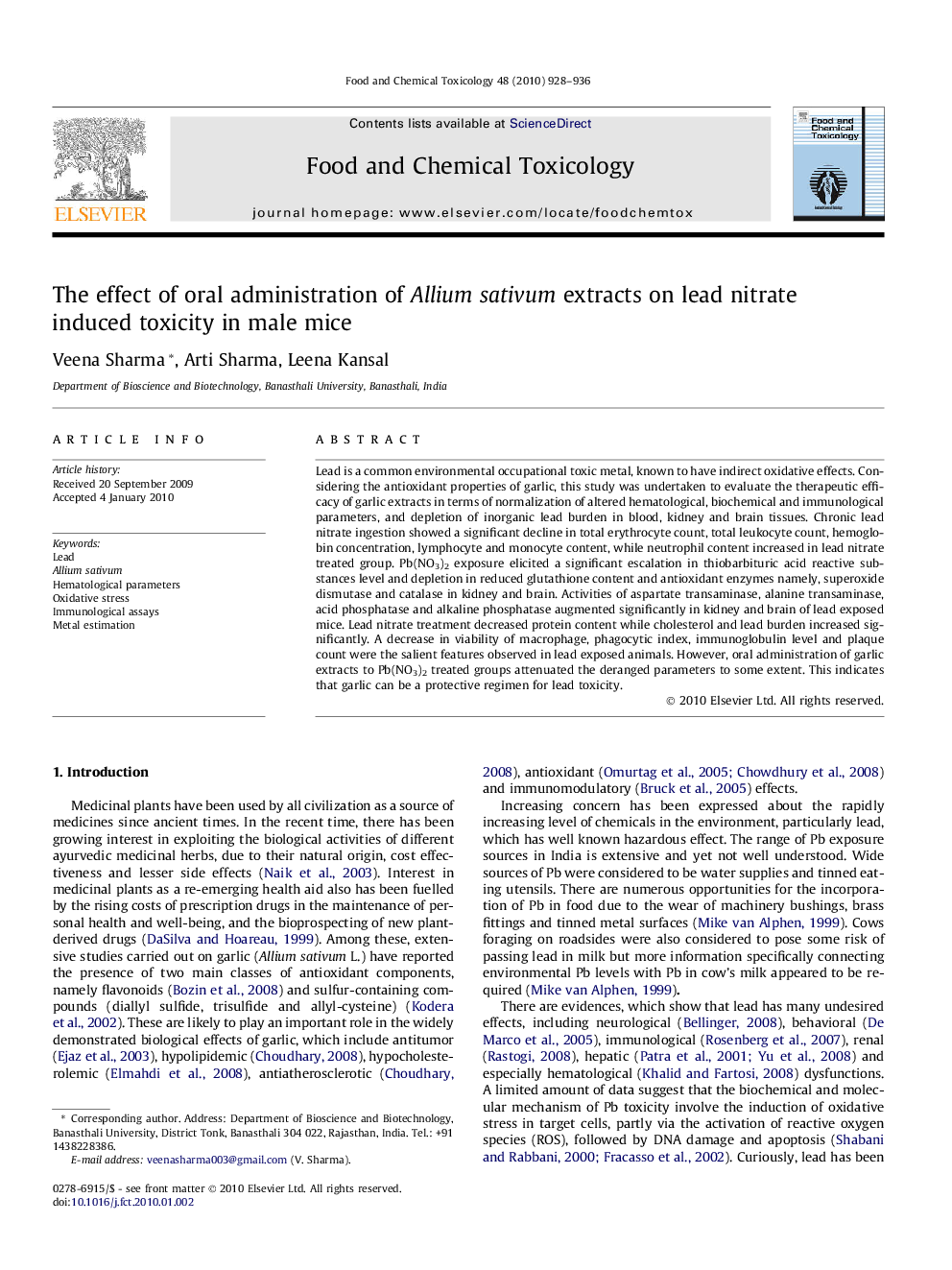| Article ID | Journal | Published Year | Pages | File Type |
|---|---|---|---|---|
| 5854007 | Food and Chemical Toxicology | 2010 | 9 Pages |
Lead is a common environmental occupational toxic metal, known to have indirect oxidative effects. Considering the antioxidant properties of garlic, this study was undertaken to evaluate the therapeutic efficacy of garlic extracts in terms of normalization of altered hematological, biochemical and immunological parameters, and depletion of inorganic lead burden in blood, kidney and brain tissues. Chronic lead nitrate ingestion showed a significant decline in total erythrocyte count, total leukocyte count, hemoglobin concentration, lymphocyte and monocyte content, while neutrophil content increased in lead nitrate treated group. Pb(NO3)2 exposure elicited a significant escalation in thiobarbituric acid reactive substances level and depletion in reduced glutathione content and antioxidant enzymes namely, superoxide dismutase and catalase in kidney and brain. Activities of aspartate transaminase, alanine transaminase, acid phosphatase and alkaline phosphatase augmented significantly in kidney and brain of lead exposed mice. Lead nitrate treatment decreased protein content while cholesterol and lead burden increased significantly. A decrease in viability of macrophage, phagocytic index, immunoglobulin level and plaque count were the salient features observed in lead exposed animals. However, oral administration of garlic extracts to Pb(NO3)2 treated groups attenuated the deranged parameters to some extent. This indicates that garlic can be a protective regimen for lead toxicity.
